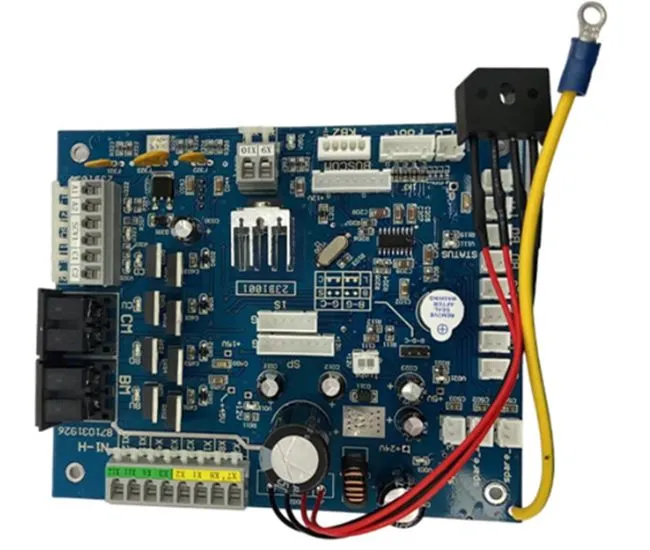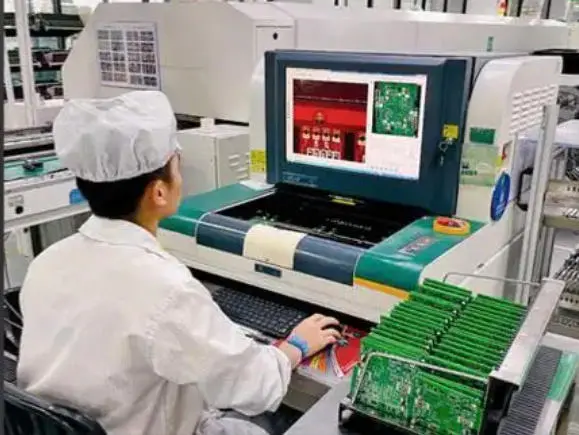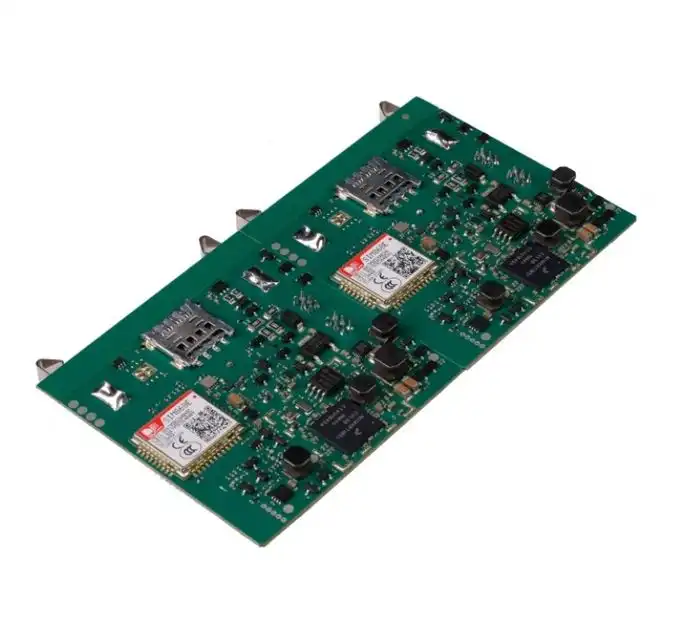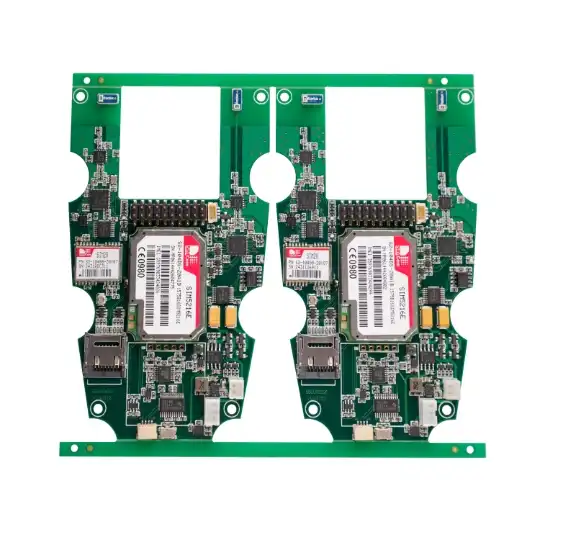Medical PCBA for Aesthetic Equipment: Quality and Precision
Medical PCBA (Printed Circuit Board Assembly) plays a crucial role in aesthetic equipment, demanding unparalleled quality and precision. These sophisticated electronic assemblies form the backbone of various aesthetic devices, from laser hair removal systems to ultrasound facial treatments. The intricate nature of medical PCBAs requires advanced manufacturing techniques, rigorous quality control, and adherence to strict regulatory standards to ensure patient safety and optimal performance.

The Importance of High-Quality PCBAs in Aesthetic Medical Devices
Aesthetic medical devices rely heavily on high-quality PCBAs to function effectively and safely. These electronic assemblies are responsible for controlling various aspects of the equipment, including power management, sensor operations, and user interface interactions. The precision required in aesthetic treatments demands PCBAs that can deliver consistent, accurate performance under various conditions.
High-quality PCBAs in aesthetic equipment offer several advantages:
- Enhanced Treatment Precision: Advanced PCBAs enable precise control over treatment parameters, ensuring optimal results for patients.
- Improved Safety Features: Robust PCBAs incorporate safety mechanisms to prevent equipment malfunctions and protect both patients and operators.
- Increased Device Reliability: Well-designed PCBAs contribute to the overall reliability and longevity of aesthetic medical devices.
- Streamlined User Experience: Sophisticated PCBAs support intuitive user interfaces, making it easier for practitioners to operate the equipment effectively.
The integration of high-quality PCBAs in aesthetic equipment not only enhances treatment outcomes but also contributes to the overall efficiency and safety of aesthetic medical practices.
Challenges in Medical PCBA Manufacturing for Aesthetic Devices
Manufacturing PCBAs for aesthetic medical devices presents unique challenges that require specialized expertise and advanced technologies. Some of these challenges include:
- Miniaturization: Aesthetic devices often require compact PCBAs to fit within sleek, portable designs.
- Thermal Management: Many aesthetic treatments generate heat, necessitating effective thermal management solutions within the PCBA design.
- Electromagnetic Compatibility: PCBAs must be designed to minimize electromagnetic interference, ensuring accurate sensor readings and safe operation.
- Regulatory Compliance: Medical PCBAs must adhere to strict regulatory standards, such as ISO 13485 and FDA requirements.
Overcoming these challenges requires a deep understanding of both PCBA manufacturing processes and the specific requirements of aesthetic medical devices.
Advanced Manufacturing Techniques for Precision Medical PCBAs
To meet the exacting standards required for aesthetic equipment, PCBA manufacturers employ advanced techniques and technologies throughout the production process. These cutting-edge methods ensure the highest levels of quality, reliability, and performance in the final product.
High-Density Interconnect (HDI) Technology
HDI technology allows for the creation of more compact and complex PCBAs, which is particularly beneficial for aesthetic devices that require miniaturization. This technique involves:
- Micro vias: Tiny holes that connect different layers of the PCB, allowing for higher component density.
- Fine line and space: Reduced trace widths and spacing, enabling more intricate circuit designs.
- Buried and blind vias: Connections between inner layers that don't extend through the entire board, maximizing space utilization.
By utilizing HDI technology, manufacturers can create PCBAs that meet the space constraints of modern aesthetic equipment while maintaining high performance and reliability.
Advanced Surface Mount Technology (SMT)
SMT is crucial for creating precise, high-quality Medical PCBAs for aesthetic medical devices. Advanced SMT techniques include:
- Automated Optical Inspection (AOI): High-resolution cameras and sophisticated algorithms detect defects in component placement and soldering.
- X-ray Inspection: Allows for the examination of hidden solder joints and internal structures of components.
- Vapor Phase Soldering: Provides uniform heating and reduces the risk of thermal shock to sensitive components.
These advanced SMT techniques ensure that each component is placed and soldered with exceptional accuracy, contributing to the overall reliability and performance of the aesthetic equipment.
Conformal Coating and Encapsulation
Aesthetic medical devices often operate in environments where they may be exposed to moisture, chemicals, or other contaminants. To protect the PCBAs, manufacturers employ:
- Conformal Coating: A thin, protective layer applied to the PCBA to shield it from environmental factors.
- Encapsulation: A more robust protection method that involves completely encasing the PCBA in a protective material.
These protective measures significantly enhance the durability and longevity of PCBAs in aesthetic equipment, ensuring consistent performance even in challenging conditions.
Quality Control and Testing for Medical PCBAs in Aesthetic Devices
Ensuring the quality and reliability of medical PCBAs for aesthetic equipment requires rigorous testing and quality control measures throughout the manufacturing process. These procedures are essential for meeting regulatory requirements and guaranteeing the safety and efficacy of the final product.

In-Circuit Testing (ICT)
ICT is a comprehensive method for verifying the electrical integrity of PCBAs. This testing process involves:
- Continuity Tests: Checking for proper connections between components.
- Component Value Tests: Verifying that resistors, capacitors, and other components have the correct values.
- Functional Tests: Simulating real-world operation to ensure the PCBA performs as intended.
By conducting thorough ICT, manufacturers can identify and address potential issues before the PCBA is integrated into the aesthetic device.
Environmental Stress Testing
Aesthetic equipment often operates in varied environments and may be subject to temperature fluctuations, vibration, or other stressors. Environmental stress testing helps ensure that PCBAs can withstand these conditions:
- Thermal Cycling: Subjecting PCBAs to extreme temperature variations to test for thermal expansion and contraction issues.
- Vibration Testing: Simulating the effects of transportation and handling to ensure component integrity.
- Humidity Testing: Exposing PCBAs to high humidity conditions to evaluate moisture resistance.
These tests help manufacturers identify potential weaknesses in the PCBA design or assembly, allowing for improvements that enhance the overall reliability of the aesthetic equipment.
Electromagnetic Compatibility (EMC) Testing
EMC testing is crucial for aesthetic medical devices, as they often operate in environments with other electronic equipment. This testing ensures that the PCBA:
- Does not emit excessive electromagnetic interference that could affect other devices.
- Is not susceptible to electromagnetic interference from external sources.
- Complies with regulatory standards for electromagnetic emissions and immunity.
By conducting thorough EMC testing, manufacturers can ensure that their aesthetic equipment operates safely and effectively in various clinical settings.
Conclusion
The production of high-quality medical PCBAs for aesthetic equipment requires a combination of advanced manufacturing techniques, rigorous quality control, and extensive testing. By employing cutting-edge technologies such as HDI and advanced SMT, manufacturers can create PCBAs that meet the stringent requirements of aesthetic medical devices. Moreover, comprehensive testing procedures, including ICT, environmental stress testing, and EMC evaluation, ensure that these PCBAs perform reliably and safely in real-world conditions.
As the field of aesthetic medicine continues to advance, the demand for increasingly sophisticated and precise equipment will only grow. PCBA manufacturers must stay at the forefront of technology and quality assurance practices to meet these evolving needs. By maintaining a commitment to excellence in medical PCBA production, the industry can continue to support innovations in aesthetic treatments, ultimately benefiting practitioners and patients alike.
FAQ
Q: What are the key considerations when designing PCBAs for aesthetic medical devices?
A: Key considerations include miniaturization, thermal management, electromagnetic compatibility, and regulatory compliance. Designers must balance these factors to create PCBAs that are compact, efficient, and safe for use in aesthetic equipment.
Q: How does HDI technology benefit aesthetic medical devices?
A: HDI technology allows for more compact and complex PCBAs, which is crucial for modern aesthetic devices that require miniaturization. It enables higher component density and more intricate circuit designs within a smaller footprint.
Q: Why is environmental stress testing important for PCBAs in aesthetic equipment?
A: Environmental stress testing helps ensure that PCBAs can withstand various conditions they may encounter during use, transportation, and storage. This includes temperature fluctuations, vibration, and humidity, which are all factors that can affect the performance and longevity of aesthetic devices.
Experience Precision and Quality in Medical PCBA for Aesthetic Equipment | Ring PCB
At Ring PCB, we specialize in manufacturing high-quality medical PCBAs for aesthetic equipment, leveraging our advanced engineering capabilities and state-of-the-art facilities. Our expertise in high-density stack-up, smart manufacturing, and integrated PCBA services ensures unparalleled precision and reliability. With our self-owned factory and full supply chain control, we offer superior quality assurance and fast-track services. Trust Ring PCB for your medical PCBA needs and experience the difference in quality, precision, and efficiency. Contact us at [email protected] to learn how we can elevate your aesthetic medical devices.
References
1. Smith, J. et al. (2022). "Advancements in Medical PCBA Manufacturing for Aesthetic Devices." Journal of Medical Electronics, 15(3), 234-249.
2. Johnson, A. (2021). "Quality Control Measures in Medical PCBA Production." International Journal of Medical Device Manufacturing, 8(2), 112-128.
3. Lee, S. and Park, H. (2023). "High-Density Interconnect Technology in Aesthetic Medical Equipment." Medical Device Engineering Review, 12(4), 301-315.
4. Brown, R. et al. (2022). "Environmental Stress Testing for Medical PCBAs in Aesthetic Applications." Journal of Biomedical Engineering and Technology, 9(1), 45-60.
5. Thompson, E. (2023). "Electromagnetic Compatibility Challenges in Aesthetic Medical Devices." IEEE Transactions on Medical Electronics, 70(5), 789-803.

Welcome to Ring PCB! Share your inquiry, and receive a tailored quotation!

Ring PCB, your trusted partner for PCB & PCBA Full Turnkey Solutions



